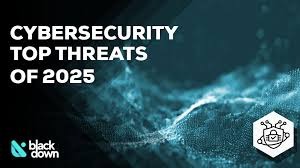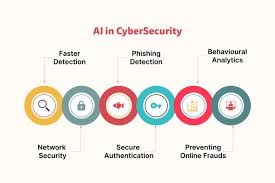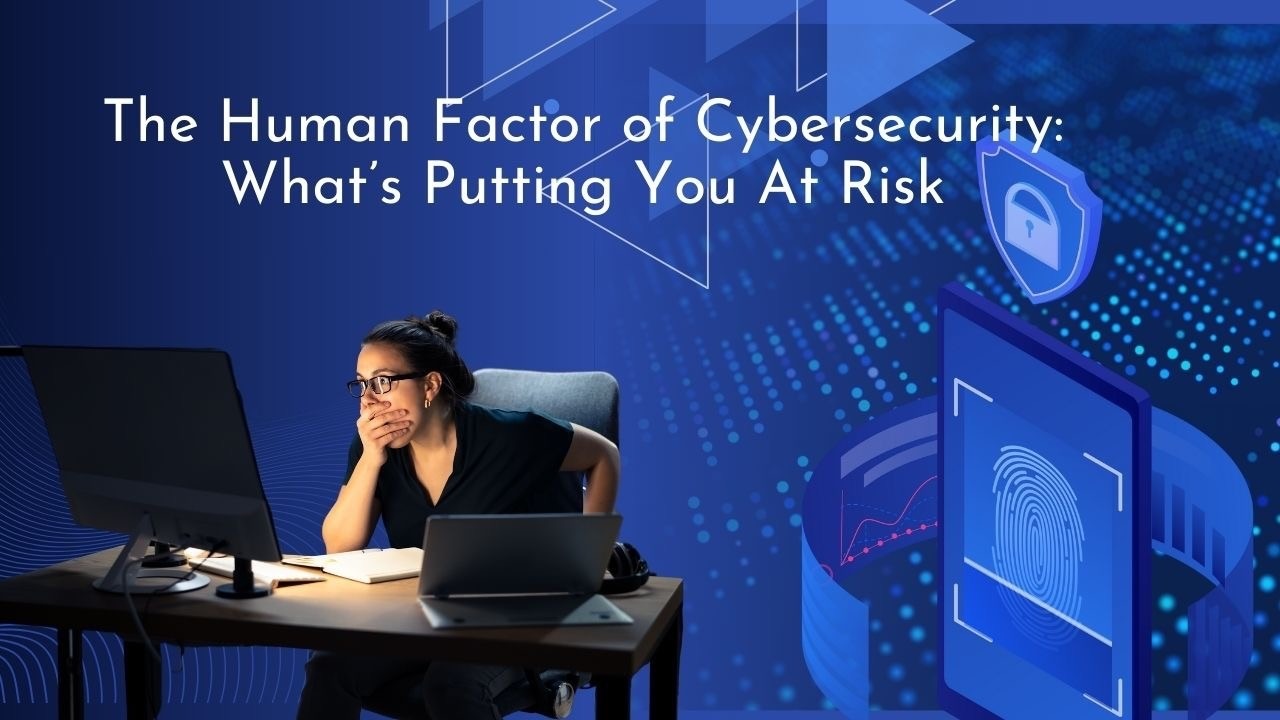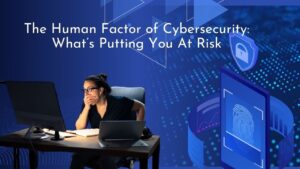The 7 Most Dangerous Cyber Threats

INTRODUCTION
New cyber threats emerge at an unprecedented rate because 2025 will introduce more 7 Most Dangerous Cyber Threats. Attacks orchestrated by hackers using artificial intelligence, quantum computing, and geopolitical conflicts generate catastrophic cyber assaults. Organisations, government entities, and individual users need to anticipate these rising dangers because failure means facing disastrous security breaches. This piece describes seven extremely dangerous cyber threats expected to appear in 2025, with details about their operation and defence strategies you can employ.
1. AI-Powered Cyberattacks
Why It’s Dangerous:
Artificial intelligence isn’t just for defence—hackers are using AI to automate attacks, craft convincing phishing emails, and bypass security systems. AI-driven malware can adapt in real-time, making it harder to detect.
Recent Example:
In 2024, a deepfake audio scam tricked a CEO into transferring $25 million to fraudsters. AI-generated voices mimicked senior executives perfectly.
How to Stop It:
- Deploy AI-based security tools that detect anomalies in real-time.
- Train employees to recognise AI-generated phishing attempts.
- Use multi-factor authentication (MFA) to prevent unauthorised access.
2. Quantum Computing Breaks Encryption
New quantum computers have the ability to break traditional encryption systems like RSA and AES in seconds of computational time. Numbers indicate that by 2025, nation-states alongside cybercriminals will abuse this discovery for bank data theft, alongside classified information.
Recent Example:
The Chinese government asserts possession of a quantum computer with capabilities to break standard encryption systems within hours, hence putting world cybersecurity at grave risk.7 Most Dangerous Cyber Threats
How to Stop It:
- Maintain offline backups (so ransomware can’t touch them).
- Use endpoint detection and response (EDR)
- Train employees on how to spot phishing emails (still the #1 ransomware entry point).
3. Supply Chain Cyberattacks
Why It’s Dangerous:
Hackers target weak links (vendors, third-party software) to breach larger organisations. One compromised supplier can infect thousands of companies. 7 Most Dangerous Cyber Threats
How to Stop It:
- Conduct rigorous third-party security audits.
- Implement zero-trust architecture (verify every access request).
- Monitor unusual network activity from vendors.
4. Deepfake Social Engineering Scams
Why It’s Dangerous:
AI-generated deepfakes (videos, voice clones) are becoming indistinguishable from reality. Scammers use them to impersonate CEOS, politicians, or even family members.
Recent Example:
A Hong Kong bank employee transferred $35 million after a video call with a deepfake CFO.
How to Stop It:
- Establish verification protocols for high-value transactions.
- Use blockchain-based identity verification.
- Educate employees on deepfake red flags (unnatural blinking, voice glitches).

5. Iot Botnets (Smart Devices Turned into Weapons)
Why It’s Dangerous:
Weakly secured smart devices (cameras, thermostats, routers) are hijacked to launch DDoS attacks, steal data, or spy on users.
How to Stop It:
- Change default passwords on all IoT devices.
- Segment IoT networks from critical systems.
- Regularly update firmware to patch vulnerabilities.
6. State-Sponsored Cyber Warfare
Why It’s Dangerous:
The actions of national governments have led them to carry out cyberattacks that aim to disrupt elections while sabotaging infrastructure and stealing intellectual property.
How to Stop It:
- Governments must invest in cyber defence alliances (like NATO’s cyber units).
- Companies should share threat intelligence with cybersecurity agencies.
- Implement air-gapped backups for critical infrastructure.
Pros and Cons of Modern Cybersecurity Measures (2025)
1. AI-Powered Cyber Defence
Pros:
- Real-time threat detection—AI analyses behaviour patterns to catch anomalies faster than humans.
- Automated responses can instantly block attacks without human intervention.
- Adaptive learning—improves over time as it encounters new threats.
Cons:
- High false positives—may flag legitimate activity as malicious.
- Expensive to implement—requires significant investment in AI infrastructure.
- Hackers also use AI—cybercriminals exploit AI to bypass defences.
Verdict: AI is essential but should complement (not replace) human oversight.
2. Quantum-Resistant Encryption
Pros:
- Future-proof data—protects against quantum computing attacks.
- Government-backed standards—NIST is finalizing post-quantum algorithms.
Cons:
- Slow adoption—Many organisations still rely on outdated encryption.
- Performance overhead—Some quantum-resistant algorithms are slower.
Verdict: A must for governments and enterprises handling sensitive data.
3. Zero-Trust Security Model
Pros:
- No implicit trust—every access request is verified.
- Limits lateral movement—Even if hackers breach one system, they can’t spread easily.
Cons:
- Complex to implement—requires restructuring network permissions.
- Can slow down workflows—constant authentication checks may frustrate users.
Verdict: Ideal for high-security environments but may be overkill for small businesses.
4. Multi-Factor Authentication (MFA)
Pros:
- Blocks 99% of automated attacks— Even if passwords are stolen, hackers need a second factor.
- Widely available—many services offer free MFA options.
Cons:
- Phishing-resistant MFA is rare—SMS-based MFA can still be bypassed.
- User resistance—some find it inconvenient.
Verdict: Always use phishing-resistant MFA (like FIDO2 keys) for maximum security.
5. Offline Backups (For Ransomware Protection)
Pros:
- Unaffected by ransomware—since backups are disconnected, hackers can’t encrypt them.
- Fast recovery—restore systems without paying ransom.
Cons:
- Manual maintenance required—must be updated regularly.
- Physical storage risks—can be damaged, stolen, or lost.
Verdict: A non-negotiable defence against ransomware.
6. Employee Cybersecurity Training
Pros:
- Reduces human error—the #1 cause of breaches.
- Cost-effective—Training is cheaper than dealing with a breach.
Cons:
- Not 100% foolproof—some employees may still fall for sophisticated scams.
- Requires ongoing effort—one-time training isn’t enough.
Verdict: Critical, but must be paired with technical defences.
7. Threat Intelligence Sharing
Pros:
- Collective defence helps organisations prepare for emerging threats.
- Early warnings—learn from others’ breaches before they hit you.
Cons:
Breach information disclosure might be withheld by corporations due to privacy considerations.
Analysing a large dataset becomes difficult when the quantity exceeds the processing capacity.
Closing Perspective: The Human Factor in Cybersecurity’s Future
At its core, cybersecurity in 2025 remains a battle between human ingenuity on both sides of the digital frontier. While AI, advanced encryption, and zero-trust architectures provide powerful tools, they’re only as effective as the people implementing them. The most sophisticated firewall can’t stop an employee from clicking a malicious link, and no quantum-resistant algorithm protects against poor password hygiene.
What truly separates resilient organizations from vulnerable ones isn’t just their security stack-it’s their security culture. Regular training, clear protocols, and a mindset where every team member views security as their responsibility create the strongest defense. Technology evolves, but human awareness and adaptability remain the ultimate safeguards against emerging threats.
Conclusion: Balancing Cybersecurity Progress and Challenges in 2025
The cyber threat environment of 2025 combines beneficial progress and major obstacles in the field of cybersecurity. The combination of three innovations, such as AI-driven threat detection with zero-trust frameworks and quantum-resistant encryption, provides organisations with strong attack protection mechanisms. Enhanced defensive capabilities against ransomware, deepfake scams and state-sponsored cyber warfare stem from these technological developments and better-trained employees, plus enhanced global relationships.
The implementation of these solutions faces three critical barriers, which include their high costs, difficult implementation processes and the never-ending cybercriminals’ pursuit of AI advancements. Security strategies must incorporate human oversight because organisations should not allow technology use to dominate their defence structures. Ransomware prevention through unalterable backups combined with IoT security improvements becomes more effective, yet the adoption pace needs enhancement while privacy regulations must maintain their balance.











